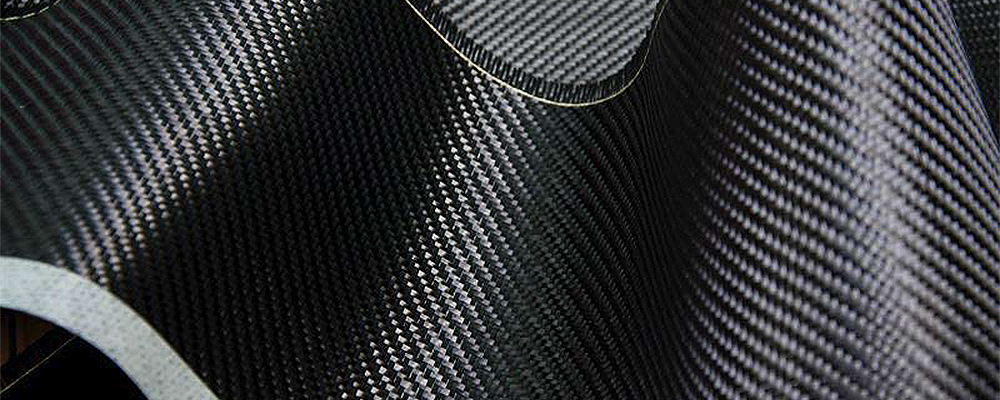Carbon Fibre
The ideal engineering material would have high strength, high stiffness, high toughness, and low weight. Carbon fibres, combined with high-performance matrices, meet these criteria more closely than any other material, and are used in hundreds of applications.

At the moment carbon fibre is still an expensive option, but as demand, and therefore production, keeps increasing worldwide, the price continues to decrease. As the material becomes ever more affordable, more and more applications will be probably be developed.
Advantages
- Good thermal conductivity
- Negative coefficient of thermal expansion
- Moderately good conductor of electricity
- Chemically inert except in strong oxidising environments or when in contact with certain molten metals
- Creep-resistant and fatigue resistant
- Excellent damping characteristics
Disadvantages
- Expensive
- Brittle
- Low impact resistance
- Low break extension (elongation)
- Relatively low compressive strength
Applications
The applications for carbon fibres are growing rapidly and new ones are being created every day. With carbon fibre offering such a vast range of qualities, we have categorised its applications based on the primary property utilised.
Applications based on strength, stiffness, and low weight
- Aircraft control surfaces and fuselages
- Helicopter rotor blades
- Wind turbine blades
- Aircraft structural parts such as doors and landing gear assemblies
- Automotive drive shafts and leaf springs
- Racing car bodies and frames
- Spacecraft, rockets, and missiles
- High precision tooling
Applications based on thermal properties
- Heat shields for missiles and rockets
- Brakes
- Aerospace antennas (because of the low coefficient of thermal expansion)
- Space structures such as telescope mounts
- Housing for computers, small motors, electical control panels
Applications based on chemical inertness
- Storage tanks, particularly when weight is a consideration, such as waste tanks on aircraft
- Bridge structures (which will not corrode and have good seismic resistance)
- Uranium enrichment centrifuge in the nuclear industry
Applications based on rigidity and good damping
- Musical instruments
- Audio speakers
- Rollers for industrial processing such as in the paper industry
- Arms for mounting the heads to read computer storage devices
Applications based on electrical properties
- Sheilds against radio frequency interference
- Circuit boards
- Touch switches
Applications based on biological inertness
- Artificial joints
- Heart-valve components
- X-ray tables and mounting arms
Applications based on fatigue resistance and self-lubrication
- Textile machine components
- Air-slide valves
- Compressor blades
- Artificial limbs
| Techinical details * | |
|---|---|
| Density | 1.8 g/cc |
| Tensile strength | 600 ksi |
| Tensile Modulus | 33 Msi |
| Elongation to Break | 1.6% |
* standard modulus